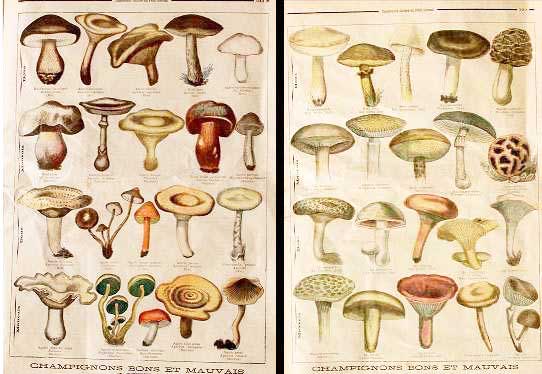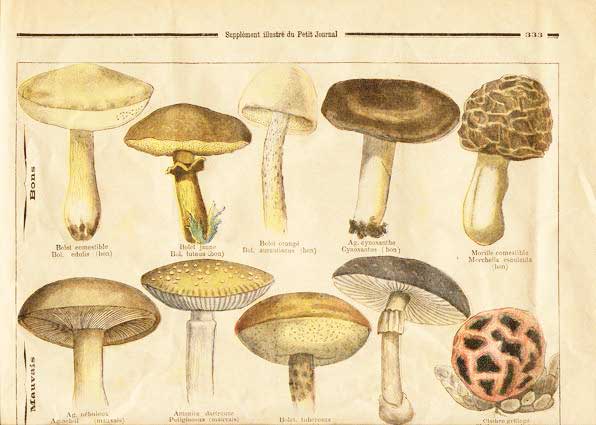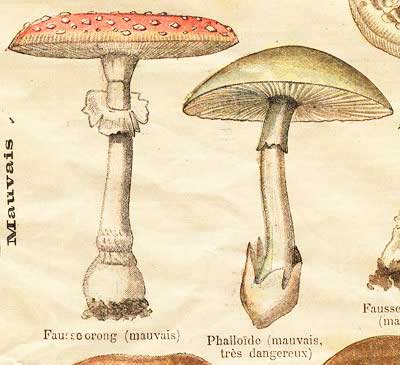Case StudiesLe Petit JournalLe Petit Journal was a Parisian daily newspaper, published from 1863 to 1944. From the outset the paper's management focussed strongly on circulation and organised various stunts and other promotional activities to that end. Circulation peaked in the 1890s with daily sales of over a million copies. In the 1880s the newspaper introduced an illustrated, 8-page weekly supplement, the Supplément illustrée, which appeared on Sundays. Each issue contained some full page colour pictures - typically of colourful or sensational events to attract readers. In 1896 four issues of the Petit Journal'sSupplément illustrée featured fungus pictures, one full page of fungi in each of the issues 306, 309, 310 and 311 which appeared on 27 September, 18 October, 25 October and 1 November, respectively. Here are two of the pages, each about 50 by 30 centimetres in full size. On the left are the fungi in issue 310 and on the right are those from issue 309. Here is an enlargement showing the top two rows from the right hand page. You can see several mushrooms and boletes and, at the top right, a wrinkled-capped Morchella with a red Clathrus below. In issue 306 the editors had explained their motives:
Of course, as well as being of service to the readers, pictures of safe and deadly fungi probably did no harm to sales either. The editors later wrote that they had been gratified to learn their fungal pictures had been well received and so produced more. Of course, some people didn't learn, for in issue 310 the editors wrote:
The editors wrote some more words about being happy to publish more fungal pictures and finished with:
Here, from issue 306, are illustrations of the well-known Fly Agaric (Amanita muscaria), on the left, and the Deathcap (Amanita phalloides). Both are marked as bad (mauvais in French) with the Deathcap additionally noted as very dangerous. The newspaper used the French language common names in all captions so the first is labelled Fausse orong (a mis-spelling of oronge) and the other Phalloide. Several French mycologists criticized the newspaper's paintings, noting that the illustrations were not necessarily reliable and that the newspaper used some odd fungal names. However, as one mycologist noted, the newspaper was simply responding to a public's wishes for information and one outcome of the newspaper's actions was that the French mycological society gained about 30 new members. If you would like to see more detail, here are links to PDFs of the four pages of illustrations (each about 1 MB):
The blurriness or misaligned colours that you can see in the illustrations of some species occurred during printing of the newspapers, not during scanning of these pages. Reference
|
![An Australian Government Initiative [logo]](/images/austgovt_brown_90px.gif)




